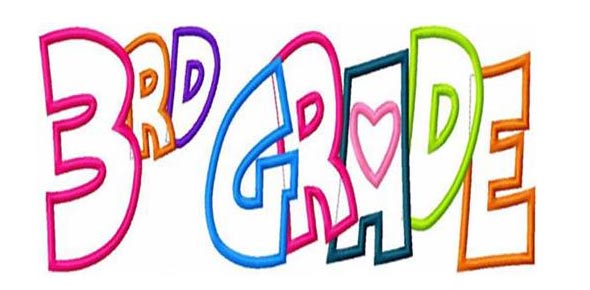Related Flashcards
Related Topics
Cards In This Set
| Front | Back |
|
Mass and Weight
A. What is mass measured with?
B. What is weight, how is it measured?
C. What is the difference between Mass and Weight?
|
A. Balance Scale
B. Weight is the measure of gravity on an object. Measured in newtons/pound
C. Mass - measure of particles; constant
Weight - gravity measure; changes w/ location
|
|
A. Name and Describe the six properties of Matter.
|
A. Density - Amount of mass in a given volume
B. Solubility - Substance ability to dissolve in another substance
C. Ductility - Ability to be pulled into a wire
D. Malleability - Abililty of substance to be rolled or pounded into thin sheets
E. State - Physical form in which matter exists
F. Thermal Conductivity - Rate at which substance transfers heat
|
|
Inertia
A. What is Inertia?
B. An object at rest is hard to ____________________
C. An object moving is hard to ________
|
A. Tendency of an object to resist a change in motion.
B. Get moving
C. Stop
|
|
Chemical Properties
A. What is a chemical property? Give examples
B. When wood burns, chemical reaction, what is created?
C. Iron reacts with oxygen to make iron oxide or ____
|
A. A property that describes a substance's ability to react or participate in a chemical reaction.
Ex: Flammability, Reactivity
B. Ash and Smoke
C. Rust
|
|
States of Matter
A. Solids have a ______ volume and a ______ shape
B. Liquids have a ______ volume and a ______ shape
C. Gases have a ______ volume and a ______ shape
|
A. definite, not definite
B. definite, not definite
C. not definite, not definite
|
|
Atomic Theory
A. Ancient Greeks
B. JJ Thomson
C. Rutherford
D. Neils Bohr
E. Erwin Schrodiner
|
A. One solid thing
B. Plum pudding model; electrons spread around
C. Discovered Nucleus and other particles
D. Electrons travel on energy paths
E. Discovered nucleous; electrons are found in clouds orbiting nucleus
|
|
Mixture vs. Compound
A. What is a mixture?
B. What is a compound?
C. What is a solution?
D. What does homogeneous mean?
|
A. A combination of substances that can be seperated by physical means
B. A chemical combination of two or more elements which are combined chemically.
C. A homogeneous mixture of two or more substances.
D. Samples taken from different areas of the mixture would be the same.
|
|
Atomic Particles
A. What is the dense, central region of an atom?
B. What is a proton?
C. What is a neutron?
D. What is an electron?
|
A. Nucleus
B. Positively charged particle found in the nucleus with amu of 1.
C. A particle with no charge found in the nucleus with amu of 1.
D. Tiny, negatively charged particle found circling the nucleus.
|
|
Bonds and Atoms
A. What is an ion?
B. What is an isotope?
C. What is an ionic bond?
D. What is a covalent bond?
|
A. An atom or molecule that has gained or lost one or more electrons and has a negative or positive charge.
B. An atom with the same # of protons as other atoms of that element but a different # of neutrons.
C. Force of attraction between two oppositely charged ions.
D. A bond formed when atoms share one or more pairs of electrons.
|
|
Atomic Structure
A. 1st energy level can hold up to _ electrons.
B. 2nd energy level can hold up to _ electrons.
C. 3rd energy level can hold up to _ electrons.
D. The # of electrons = the _____ #
|
A. 2
B. 8
C. 8
D. Atomic
|
|
Atom Structure
Which particle is which?
|
A. The + particles are protons.
B. The neutral particles are neutrons.
C. The white - particles are electrons.
D. The rings around the nucleus are energy levels.
|
|
Tests
What is the test for...
A. Carbond dioxide gas?
B. Oxygen gas?
C. Hydrogen gas?
D. List three ways to recognize a chemical reaction
|
A. Bromothymol Blue turns yellow
B. Glowing splint relights
C. Buring splint makes the gas pop
D. Bubbles; unexpected color change; production of a new substance
|
|
Atom Vocabulary
A. Atom
B. Atomic Mass
C. Atomic Number
D. Elements
|
A. the smallest unit of an element that maintains the chemical properties of that element
B. the mass of an atom expressed in atomic mass units
C. the # of protons in an atom; same for all atoms of an element
D. A substance that cannot be broken down into simpler substances by chemical means
|
|
Periodic Table
A. What is the periodic table?
B. Describe Group 18
C. Describe Group 17
D. Describe Group 1
E. Describe Group 2
|
A. an arrangement of the elements in order of their atomic numbers such that elements with similar properties fall in the same column or group
B. Full outer energy level; Stable atoms called "Noble Gases"
C. Missing 1 electron in outer energy level; makes ions w/ -1 charge
D. 1 electron in outer level; makes ions with +1 charge
E. 2 electrons in outer level(FULL); makes ions with +2 charge
|
|
Photosynthesis & Respiration
A. What is the symbol and word equation for photosynthesis?
B. What is the symbol and word equation for respiration?
C. What are the reactants and products of photosynthesis?
D. What are the reactants and products of respiration?
|
A. symbol - H2O + CO2 + Light Energy ----> C6H12O6 + O2
Word - Water + Carbon Dioxide & Light Energy produces glucose sugar and oxygen gas
B. symbol - C6H12O6 + O2 -----> H2O + CO2 + Energy
Word - Glucose sugar and oxygen gas produces water & carbon dioxide & energy
C. Reactants ---> water, carbon dioxide Products ---> glucose sugar, oxygen gasD.
D.Reactants ---> glucose sugar, oxygen gas Products ---> water, carbon dioxide
|






